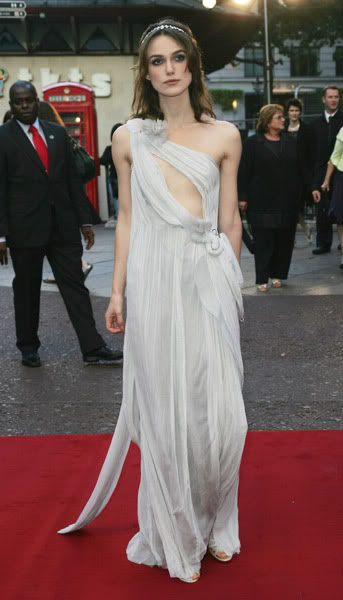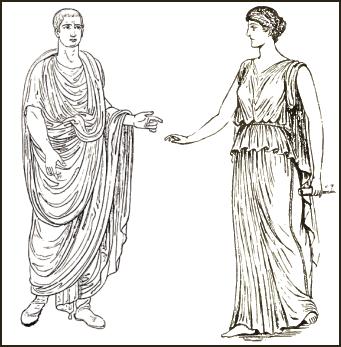The Toga was a garment worn by both men and women of the Roman Empire. There are several types of Togas but we will discuss the following.
Toga Virilis: Toga that is white in color, undecorated wool fabric. This toga was worn by male roman citizen after age sixteen
Toga Pulla: A black or dark colored toga that was worn in mourning
Toga Picta: Toga that was purple with gold embroidery and was worn by distinguished persons on special occasions
There are several cultures that influenced the Ancient Roman clothing styles and way of dressing. Etruscan towns on the Italian peninsula were influenced by Greek culture. Greek goods emerged in Etruria through trade and the style of Etruscan dress grew increasingly similar to that of the Greeks. Although much of the art of Etruria was of local production, rich Etruscans also purchased imported art objects from abroad, especially from Greece, and many of these were placed in the tombs with their owners. Etruscans wore the himation after its initial appearance among the Greeks. Accessories including necklaces, earrings, decorative brooches, and fibulae appear in painting and sculpture was most often worn by women in comparison to men. Jewelry was either of local origin or imported from overseas. Wealthy individuals were able to afford and purchase lavish linen goods from Egypt and silk was imported from China through northern India.
The original togas were made up of white wool accompanied by a band of color around the edge. At a later time there were additional components added to the toga including a sinus (formed from the overfold of the Imperial toga) and umbo (a decorative element that was formed from the overfold of the Imperial toga).
The Ancient Etruscans and Roman Era have been a major influence on today’s fashion. From the red carpet to the runway there is still evidence today of women wearing Roman dress. Although there some alterations most of the key elements have remained the same.
Have you ever tried to make a modern day toga using household items? Try it, and let us know how it works!!
Written by: Fatima Tan’ia














